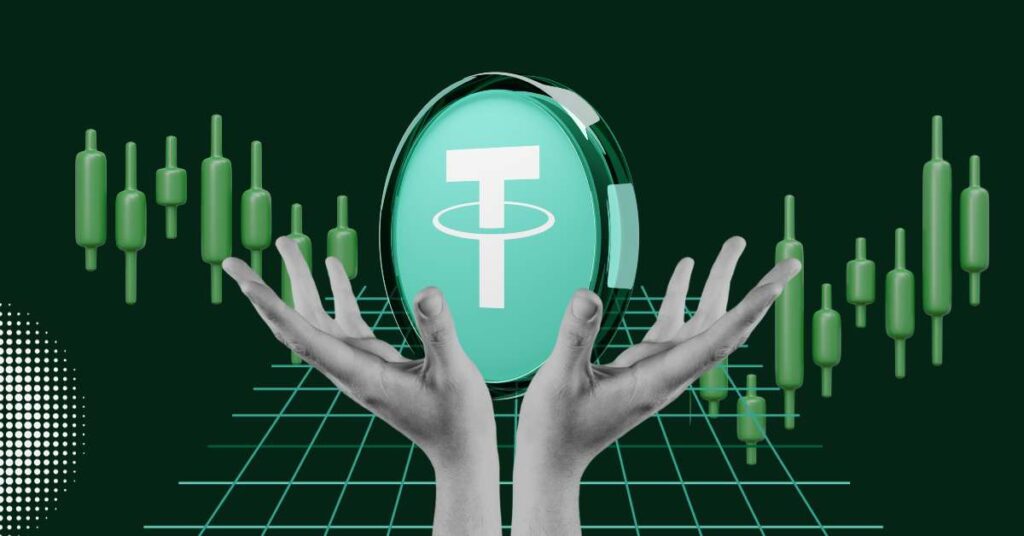Tether (USDT) stands as one of the most prominent and widely used cryptocurrencies in the digital asset ecosystem. As the leading stablecoin by market capitalization and trading volume, it has become a cornerstone of the crypto market, offering stability in an otherwise volatile landscape. This article delves into the creation of USDT, its mechanism for maintaining a peg to the U.S. dollar, its multifaceted role in the cryptocurrency world, and the persistent controversies surrounding its reserves and transparency. Additionally, we explore its practical applications in trading, decentralized finance (DeFi), and cross-border transactions, supported by key statistics, notable events, and expert perspectives.
The Creation of Tether (USDT)
Tether was launched in July 2014 under the name “RealCoin” by founders Brock Pierce, Reeve Collins, and Craig Sellars. It was rebranded to Tether in November 2014, reflecting its mission to “tether” a digital asset to a stable fiat currency—the U.S. dollar. Issued by Tether Limited, a company incorporated in Hong Kong and closely affiliated with the cryptocurrency exchange Bitfinex (both share the parent company iFinex), USDT was initially built on the Bitcoin blockchain via the Omni Layer protocol. Over time, it expanded to operate on multiple blockchains, including Ethereum, Tron, Solana, and others, enhancing its accessibility and utility.
The core idea behind Tether was to create a cryptocurrency that combines the benefits of blockchain technology—speed, decentralization, and security—with the stability of a fiat currency. By pegging each USDT token to one U.S. dollar, Tether aimed to provide a reliable bridge between traditional finance and the crypto economy, addressing the extreme price volatility seen in assets like Bitcoin and Ethereum.
Maintaining the U.S. Dollar Peg
Tether’s stability hinges on its claim of being fully backed by reserves equivalent to the total supply of USDT in circulation. According to Tether Limited, for every USDT token issued, there is a corresponding U.S. dollar or equivalent asset held in reserve. This 1:1 peg is intended to ensure that USDT remains redeemable for $1 at any time, theoretically preventing significant deviations from its target value.
The process works as follows:
- Issuance: When new USDT tokens are created, Tether Limited claims to deposit an equivalent amount of fiat currency or cash equivalents into its reserves.
- Redemption: When users redeem USDT for USD, the corresponding tokens are “burned” (removed from circulation), and funds are released from the reserves.
- Reserve Composition: Initially, Tether promised that its reserves consisted solely of U.S. dollars. However, over time, it revised this claim to include a mix of cash, cash equivalents (e.g., U.S. Treasury bills), and other assets like secured loans, precious metals, and even Bitcoin.
Tether publishes daily updates on its website detailing its total assets and liabilities, aiming to demonstrate that its reserves match or exceed the circulating supply of USDT. As of March 2025, with a market capitalization exceeding $120 billion, Tether’s reserves reportedly include over $100 billion in U.S. Treasury bonds, significant Bitcoin holdings (valued at billions), and physical gold, among other assets. Despite occasional minor fluctuations—typically within a few cents—USDT has largely maintained its $1 peg, even during periods of market turbulence.
However, the peg’s reliability depends heavily on the liquidity and quality of these reserves, a point of contention that has fueled ongoing debates about Tether’s transparency and stability.
Role in the Crypto Market
Tether’s role in the cryptocurrency market is multifaceted, making it an indispensable tool for traders, investors, and institutions. As the largest stablecoin by market cap and trading volume, it commands a dominant position, often accounting for over 70% of the stablecoin market share.
- Trading Liquidity:
USDT serves as a primary trading pair on most cryptocurrency exchanges, acting as a proxy for the U.S. dollar where direct fiat-to-crypto pairs are unavailable. Its stability allows traders to move in and out of volatile assets like Bitcoin and Ethereum without converting to fiat, reducing exposure to price swings and minimizing slippage. In 2023 alone, USDT processed over $3 trillion in transactions, underscoring its critical role in market liquidity. - Store of Value During Volatility:
During periods of extreme market volatility, such as the 2022 crypto crash, investors often convert their holdings into USDT to “park” their funds safely within the crypto ecosystem. This feature has cemented its status as a “safe haven” asset in the digital realm. - Market Influence:
Studies and expert opinions have suggested that Tether issuances can influence broader crypto market trends. For instance, a 2021 study noted unusually high Bitcoin returns following large USDT minting events, raising questions about potential market manipulation—a charge Tether has consistently denied.
Use in Decentralized Finance (DeFi)
Tether has become a linchpin in the rapidly growing decentralized finance (DeFi) sector, where its stability and liquidity enable a range of financial activities on blockchain platforms. In DeFi, USDT is used as:
- Collateral: Users deposit USDT into lending protocols like Aave or Compound to borrow other cryptocurrencies or earn yield, avoiding the volatility risks of native crypto assets.
- Liquidity Provision: On decentralized exchanges (DEXs) like Uniswap, USDT is paired with other tokens in liquidity pools, facilitating seamless swaps and earning fees for liquidity providers.
- Yield Farming: Participants in DeFi protocols stake USDT to generate returns, leveraging its stability to participate in complex financial strategies without exposure to price fluctuations.
The integration of USDT into DeFi has democratized access to financial services, particularly in emerging markets where traditional banking infrastructure is limited. Its widespread adoption across multiple blockchains enhances its interoperability, making it a preferred stablecoin for DeFi applications.
Cross-Border Transactions
One of Tether’s most transformative applications is in cross-border payments and remittances. Traditional international transfers via banks are often slow (taking days) and expensive (with high fees). USDT, by contrast, offers near-instant settlements at a fraction of the cost, leveraging blockchain technology to bypass intermediaries.
- Remittances: In regions like Latin America and Southeast Asia, where remittances are a lifeline for many economies, USDT provides a stable and efficient alternative to fiat-based systems. In 2022, Tether launched MXNT, a peso-pegged stablecoin, to further penetrate these markets.
- Business Use: Companies use USDT for cross-border settlements, benefiting from its speed and low transaction costs compared to SWIFT transfers.
- Financial Inclusion: In emerging markets, where over 50% of crypto transactions involve stablecoins, USDT facilitates access to global markets for unbanked populations.
This utility has driven USDT’s adoption beyond trading, positioning it as a practical tool for real-world financial applications.
Controversies: Reserves and Transparency
Despite its dominance, Tether has been mired in controversies since its inception, primarily centered on the transparency and adequacy of its reserves. Critics argue that Tether’s claims of full backing have not been consistently substantiated, raising concerns about its ability to honor redemptions in a crisis.
- Early Doubts: In 2017, Tether faced scrutiny after a $31 million USDT theft prompted a hard fork to freeze the stolen tokens. That same year, it struggled to meet withdrawal demands, fueling speculation about its liquidity.
- Regulatory Scrutiny: In 2019, the New York Attorney General (NYAG) accused Tether and Bitfinex of covering up an $850 million shortfall by commingling funds. The investigation revealed that, at times, only 74% of USDT was backed by cash and equivalents, with the rest tied to other assets. Tether settled in 2021, paying an $18.5 million fine without admitting wrongdoing, and agreed to provide quarterly reserve reports.
- CFTC Fine: In 2021, the U.S. Commodity Futures Trading Commission fined Tether $41 million for misleading statements about its reserves, finding that it held full backing for only 27.6% of the days between 2016 and 2018.
- Reserve Composition: Recent disclosures show a diverse reserve portfolio—U.S. Treasuries, Bitcoin, gold, and secured loans—rather than the promised 100% cash backing. While Tether argues this diversification strengthens its stability, critics question the liquidity of these assets during a potential “bank run.”
Expert opinions remain divided. Adam Carlton, CEO of Pink Panda, has called Tether’s reserves “opaque” and questioned their composition, while others, like Daniel Rodriguez of Hill Wealth Strategies, note that USDT’s peg has held steady despite these issues, suggesting a degree of operational resilience. Posts on X echo this skepticism, with users citing the lack of full audits and historical fines as red flags.
Key Statistics and Notable Events
- Market Cap: As of March 2025, USDT’s market capitalization exceeds $120 billion, making it the third-largest cryptocurrency after Bitcoin and Ethereum.
- Trading Volume: Daily trading volume often surpasses $90 billion, outpacing even Bitcoin at times.
- Circulating Supply: Approximately 143 billion USDT tokens are in circulation, with reserves reportedly at $118 billion as of August 2024, including $5.3 billion in excess reserves.
- Notable Events:
- November 2017: $31 million USDT theft and subsequent hard fork.
- April 2019: NYAG lawsuit alleging reserve mismanagement.
- October 2021: CFTC fine of $41 million for misleading reserve claims.
- May 2022: Launch of MXNT, expanding into Latin America.
- October 2023: Paolo Ardoino appointed CEO, signaling a leadership shift.
Expert Opinions and Future Outlook
Experts offer varied perspectives on Tether’s future. Proponents argue that its dominance and utility ensure its longevity, with Tether’s $5.2 billion profit in the first half of 2024 reflecting financial health. Critics, however, warn that unresolved transparency issues and regulatory pressures—such as the EU’s MiCA framework, which USDT does not yet comply with—could undermine its position, especially as competitors like USDC gain traction with clearer audits and compliance.
Looking ahead, Tether’s ability to adapt to regulatory demands, enhance transparency, and maintain its peg will be critical. Innovations like integrating smart contracts or expanding into new markets could bolster its utility, but any failure to address reserve concerns risks destabilizing its ecosystem—and potentially the broader crypto market, given its interconnectedness.


